Ammunition of almost any type goes through cycles of abundant supply to nearly impossible to find. During these periods of unavailability, production lines will run 24/7 but demand exceeds output. Shooters with empty 5.56 brass case may be wondering about converting some of that to .300 Blackout brass.
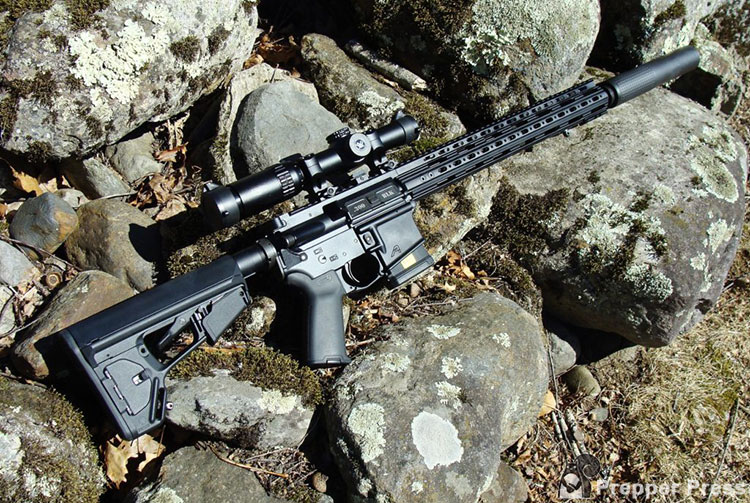
During these times of ammo shortages, when no one can find bulk ammo deals, it’s only natural that some would turn to reloading as a way to stay in the game – which spikes a second wave of equipment and component sales. AR-15 enthusiasts who have converted their .223 AR-15 to a .300 Blackout, having the equipment and know-how to convert that brass can expand your AR-15 ammo and reloading options. Know the differences between these two rounds before taking the plunge.
There are a variety of products mentioned in this article, all products I’ve used in this process. For ease of reference, they’re all in the following table:
| Product | Retailer 1 | Retailer 2 |
|---|---|---|
| .300 BLK Barrels and Uppers (vary) | Palmetto State Armory | Optics Planet |
| RCBS Resizing Die | Amazon | Optics Planet |
| Imperial Sizing Die Wax | Amazon | Brownell’s |
| Dillon Swaging Tool | Amazon | X |
| Hornady Lock-N-Load Case Prep Trio | Amazon | Optics Planet |
| A Cheap Chop Saw | Amazon | X |
| .300 Resizing Die | Amazon | Optics Planet |
| Little Crow Case Trimmer | Amazon | Brownell’s |
| Lyman Reloading Handbook | Amazon | X |
| Caldwell Brass Cacther | Amazon | Optics Planet |
| Lyman Ammo Checker | Amazon | Optics Planet |
Quick Reloading Overview
Reloading of ammunition is a process worthy of separate, specialized posts, like my article on reloading shotgun shells. The short version is that reloading involves a reloading press and caliber-specific dies, typically two of them for bottleneck rifle cartridges.
The first resizing die squeezes fired cases back to their original dimensions while popping out their fired primers. New primers are then seated, followed by charges of new powder. The second die is used for final insertion and seating of projectiles. Caliber-specific components include cartridge cases and bullets. Primers and powders are by no means generic, but they can often be used for several calibers.
Brass and bullets constitute the greatest per-cartridge expense, although a supply of fired cases can eliminate that cost – at least, for a while.
When pickings are lean some creative reloaders form their brass from other cartridge cases. Out of necessity, I went this route when the .300 Blackout was new due to lack of available ammunition. Being a longtime handloader I had equipment, and even a set of new .300 BLK dies. Most of the necessary components were on hand, but I didn’t have a single .300 BLK case.
Worse, I’d taken possession of an experimental AR-15 upper receiver assembly provided by a manufacturer for an R&D project. Like many of today’s shooters, I did have a bucket full of once-fired .223 brass. The expedient solution was case-reforming.
Brass Case-Forming Examples
Many of today’s popular rifle cartridges are evolutions of previous calibers. For example, the .308 Winchester – the civilian 7.62×51 NATO – is shortened post WWII version of the .30/06. They share the same 0.473” case-rim and .308 bore-diameter.
Likewise, the smaller .223 Remington/5.56 NATO is one of several cartridges that evolved from the .222 Remington, a unique new cartridge that appeared in 1950. The subsequent .222 Remington Magnum and .223 were lengthened versions.
Another, the .221 Fireball, was shortened for more efficient powder combustion in Remington’s futuristic XP-100 bolt-action pistol. Nevertheless, they all have a common 0.378” rim and .224 bore.
Given this, it’s logical to wonder about converting cartridge brass to different calibers. Shortly after its appearance, the .308 Winchester was “necked down” to shoot smaller-diameter bullets, resulting in the .243 Winchester. The little .221 Fireball was obscure from its inception. That is, until it was “necked up” to .30 caliber. Today, it’s sibling, the .300 Blackout, is a popular chambering for AR-15s.
.300 Blackout Background
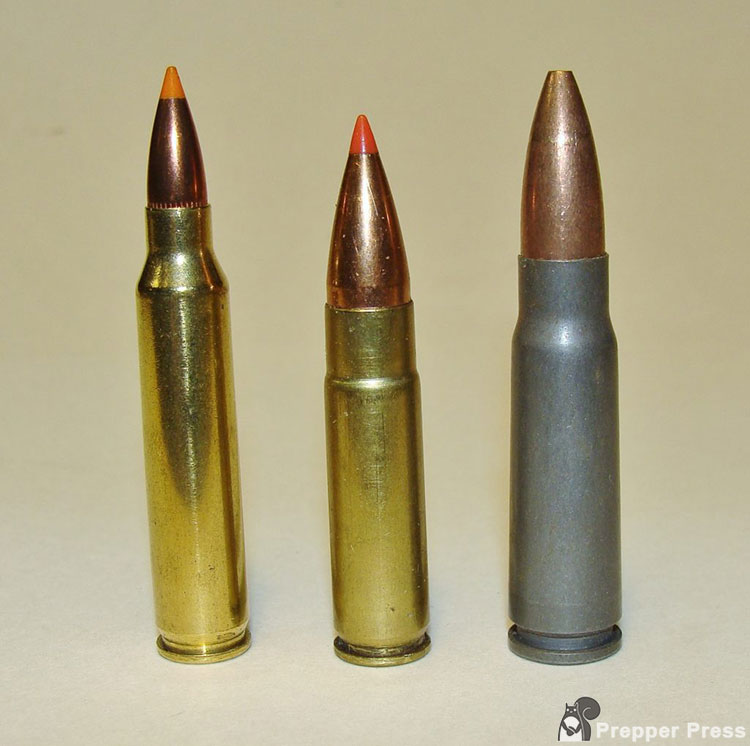
I covered the .300 BLK during a 2020 post titled .30-Caliber AR-15 Options. The following is an excerpt:
As offered by AAC, this cartridge is an incarnation of the older J.D. Jones-designed “Whisper”. You can form brass from 5.56mm/.223 cases by trimming off the shoulder area, but it’s really a necked up .221 Fireball (with an alternate title of 7.62 x 35mm).
The original idea, as marketed by SSK, was to offer a .30 cartridge capable of cycling through an AR-15 – but not just any cartridge! The shortened case of this one left room for longer heavy bullets weighing 200 grains or more.
When fired at subsonic velocity, pressure was sufficient to cycle an AR-15 and the cartridges were still short enough to fit within M-16 magazines. The addition of a suppressor resulted in a very quiet rifle; hence the “whisper” moniker.
Advanced Armament Corporation (AAC) embraced this concept for use by the Spec Ops community with further emphasis on fast loads. After minor tweaks, they introduced the new .300 Blackout which, with lighter 110-125 grain loads, increased velocity to around 2300 fps.
Recoil is negligible and performance is roughly on par with the 7.62×39 Russian. The .300 BLK has since caught on, resulting in a proliferation of firearms, AR-15 upper-receiver assemblies and barrels along with ammunition from mainstream manufacturers.
.300 Blackout AR-15 Conversion
Actually, a .300 BLK AR-15 conversion requires nothing more than a new barrel. With proper head-spacing, everything else should be good to go. For the most part, this includes magazines.
If using hi-cap types, their internal vertical ribs can squeeze larger stacks of stubby rounds inward through bullet contact. Some users file down their polymer ribs, while others switch to new .300 BLK mags.
If greater versatility is what you’re after, just pop the two pins on your lower receiver and drop in another pre-zeroed upper receiver assembly! You’ll have an instant transformer capable of firing .223/5.56 or .300 BLK rounds (avoid caliber mix-ups via distinctive mags and distinct dust-covers).
With a bucket full of 5.56 brass and the correct reloading equipment, a nearly indefinite supply of economical fodder would be assured for either 5.56 or .300.
6 Steps to Create .300 BLK Cases from .223 Brass
The .223 and .300 BLK share the same .378” rim and case body, but a loaded .300 BLK cartridge is much shorter. Its shoulder is also less pronounced due to a wider .30-caliber neck and mouth. Actually, an entire .300 BLK cartridge-case is shorter than the straight-walled section of a .223/5.56 casing.
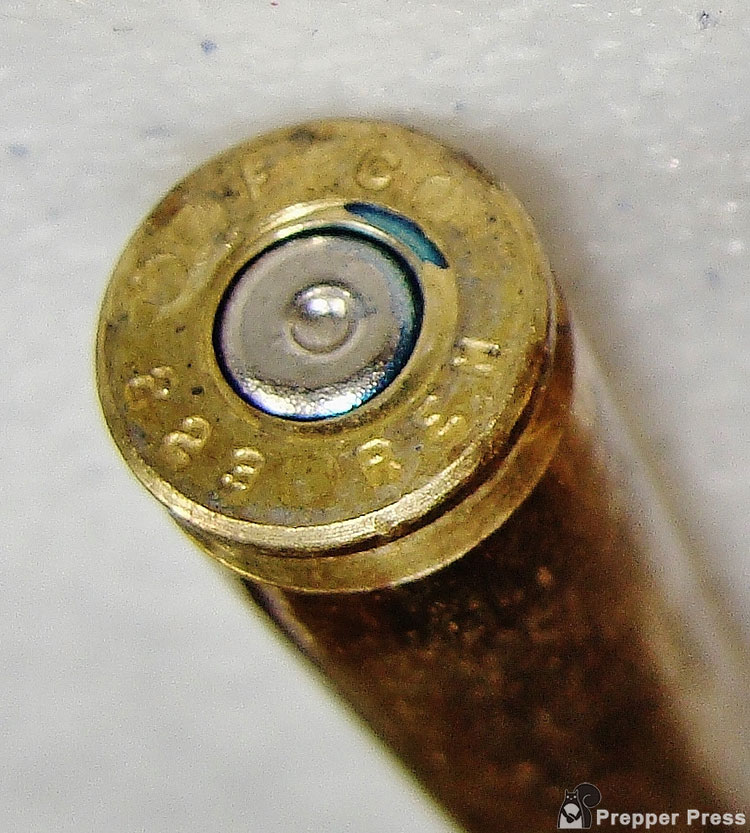
So, right off the bat, creating .300 BLK cases from fired .223/5.56 brass will require some means to shorten them. BUT, once trimmed to below their shoulders, the remaining pieces can be lubricated and squeezed through a standard .300 BLK sizing die.
Using only moderate pressure, they should emerge with a slight shoulder and a .30-caliber neck. If all goes well, they’ll also be a bit long, addressed by a final trim. After minor deburring and chamfering, you’ll have a useful .300 Blackout case, though the headstamp may indicate otherwise.
For better or worse, here’s the process I used to build .300 Blackout cases…
1 – Reform the Brass
Yes, the reforming process is fairly labor intensive, but I had surprisingly good luck from the start. The key was a stash of uniform, once-fired brass. The 5.56 NATO can work, but being more of a global commodity, it originates from numerous sources with varying tolerances. Those with thicker brass could produce fat necks if reformed to .300 BLK.
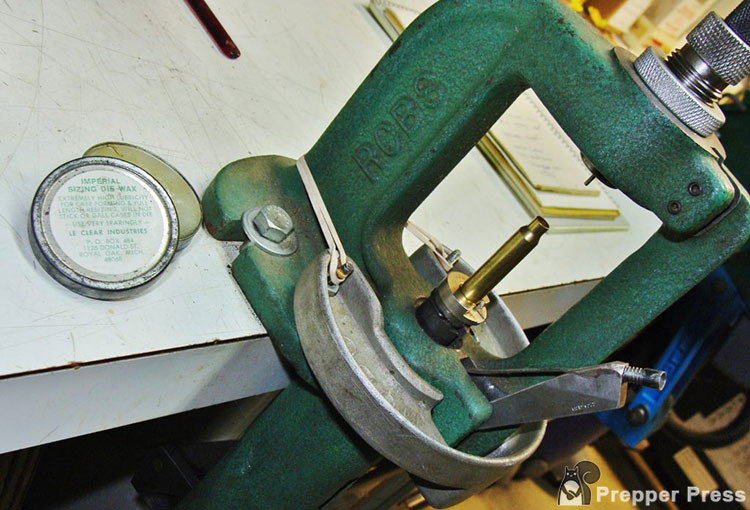
The outcome could be an incomplete chambering or stuck cartridges, so the safest bet is to begin with a small trial batch. I dipped into a large stash of once-fired Federal .223 American Eagle cases. Clean brass aids the reforming process, so they got a two-hour ride in my case tumbler.
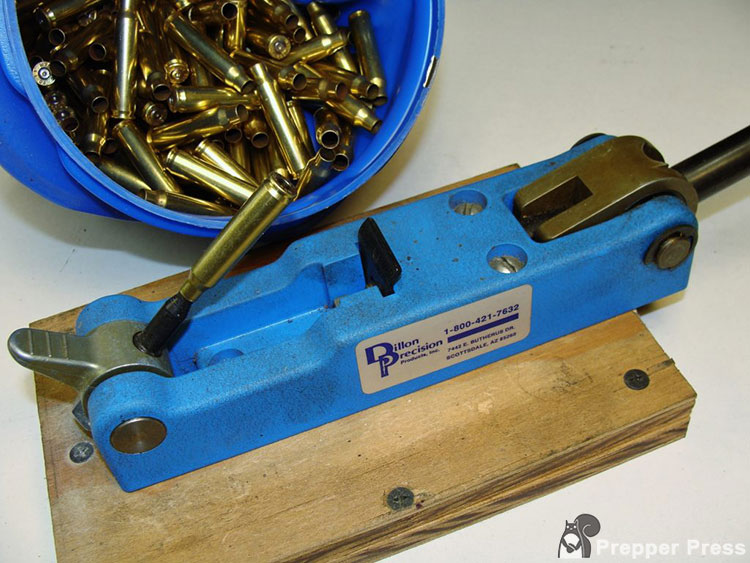
2 – Prep the Case
The next step was de-priming. I screwed an RCBS .223 resizing die into my reloading press because its de-capping pin was sturdy enough to knock out crimped primers common to military 5.56 NATO brass (though mine were head-stamped “FC .223 Rem” the primers were also crimped). Each case received a light swipe of Imperial Sizing Die Wax with my finger-tips, and was then pressed through the die, which simultaneously popped out its fired primer.
The remaining crimp will interfere with primer seating unless removed, so I ironed them out with a Dillon swaging tool. The primer pockets were then cleaned using the motorized Hornady Lock-N-Load Case Prep Trio. These steps are the same used to prep .223 or 5.56 brass. Case trimming is often required, too. The difference is the amount!
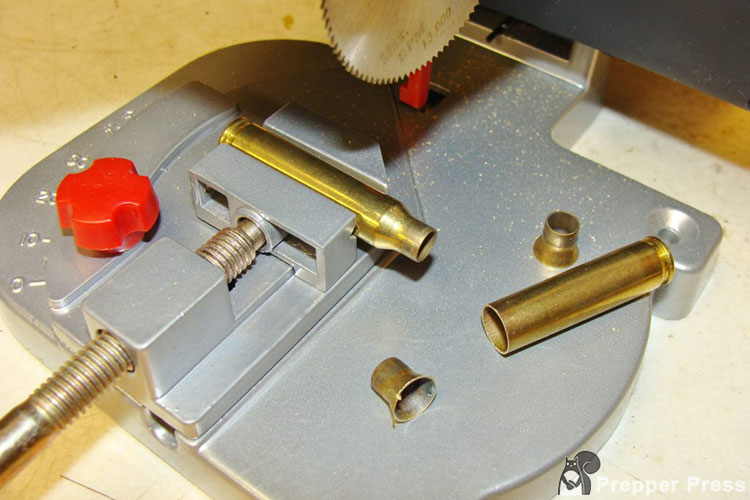
3 – Shorten the Case
I bought a cheap chop saw for this step. Surprisingly, it’ll cut through a brass .223 case with ease. Through trial and error, I established the correct cut-off spot, located just below the casing’s shoulder.
Next, I fabricated a simple wooden stop-gauge which was double-face taped to the saw. This permitted consistent cuts allowing for faster, mass production. When done, I had a collection of cartridge cases that resembled Winchester’s new .350 Legend, and a pile of weird little brass funnels.
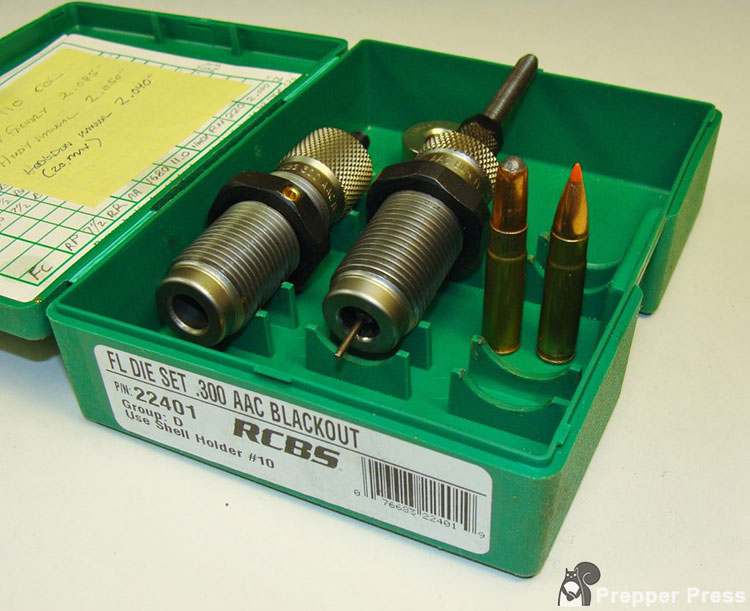
4 – Re-Form the Case
The next step is to unscrew the .223 die from the press and exchange it with a .300 Blackout resizing die (no need to switch shell holders). Each case received another swipe of lube and was run through the die, emerging with a slight shoulder and .30-caliber neck. Cool! I’d intentionally cut them a bit long to maintain sufficient length, meaning they needed one final trim.
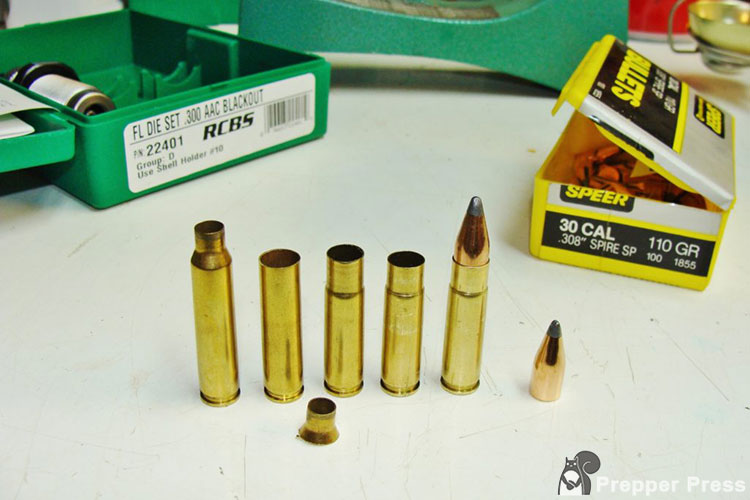
The process is a bit tedious, but it beats watching reruns on the couch.
5 – Final Trim
Bottle-neck cartridge cases can grow when fired, so minor case trimming is often necessary. Small hand-cranked lathes are sold for this purpose, but they’re tedious for large batches of brass. Thus, I sprung for a .300 Blackout Little Crow WFT Case Trimmer; money well spent! It resembles a drill chuck, but has a .30-caliber arbor and a toothed cutting face.
Chuck the device in a drill, spin it up, slip a case over the arbor, and press inward with your fingers. An interior shoulder prevents over-insertion, resulting in a perfect trim. Once a rhythm is established it’s fast and easy.
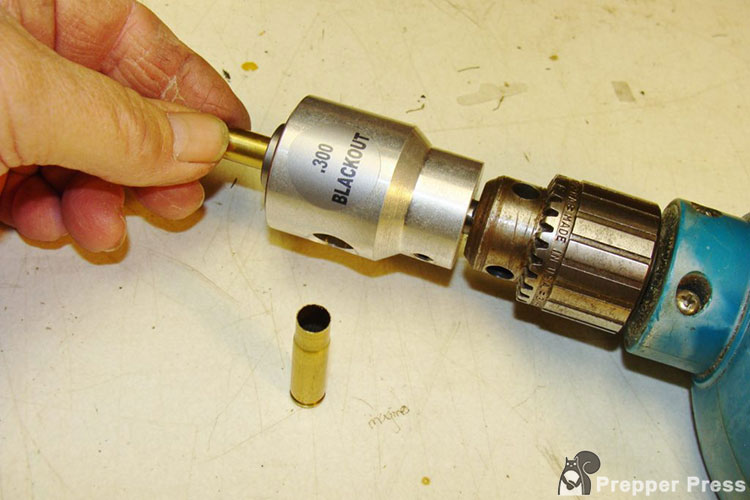
6 – De-Burring & Chamfering
This phase is a standard post-trim procedure. A small hand tool will work, but I used the above motorized Hornady Case Prep gizmo. It has two rotating cutters deigned for these tasks. One knocks off the exterior burrs and the other works like a countersink, providing a slight funnel to aid bullet seating.
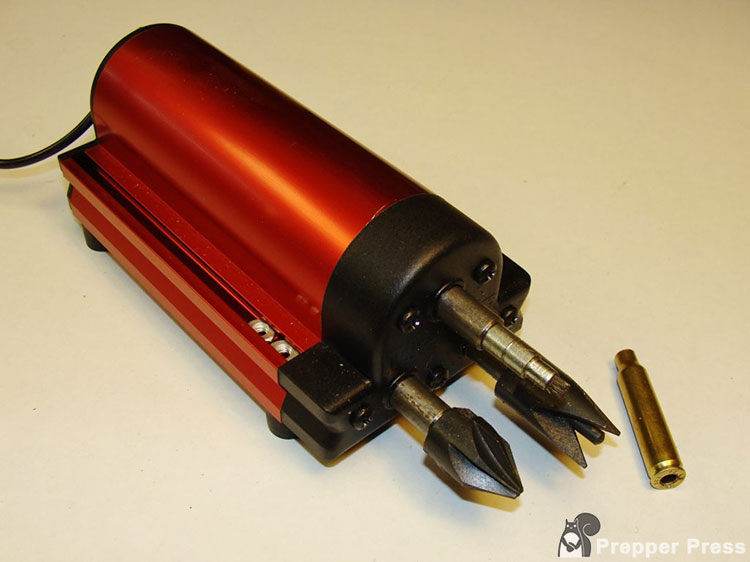
Mission Accomplished?
It took some doing but I finally had a supply of .300 Blackout cases. From that point forward, the reloading process was no different from the parent .223, or any other bottleneck cartridge. I just needed safe data (see Lyman Reloading Handbook) along with suitable components: primers, powder, and bullets.
With luck, you may already have some components. My supply of Remington #7 ½ primers worked fine from the start. Same for H-110 powder, which I used for magnum handgun loads and even .410 shotshells. It’s apparently a popular supersonic .300 BLK propellant for good reasons.
I achieved velocities of 2350+ fps with some Speer 110 grain bullets that were lurking on a shelf. I’m still using these components, although some use bullets up to 150 grains for supersonic .300 BLK loads.
Subsonic loads require different powder. AA1680 is used for light handgun loads, and it’s also good for lobbing ultra-heavy .30-caliber bullets a tad above 1000 fps. Small doses of it did the trick for me, producing good accuracy with 220-grain round-nose bullets. They flew like bricks but were mouse-fart quiet when suppressed.
Mission accomplished? Yup! Actually the whole project went much smoother than anticipated.
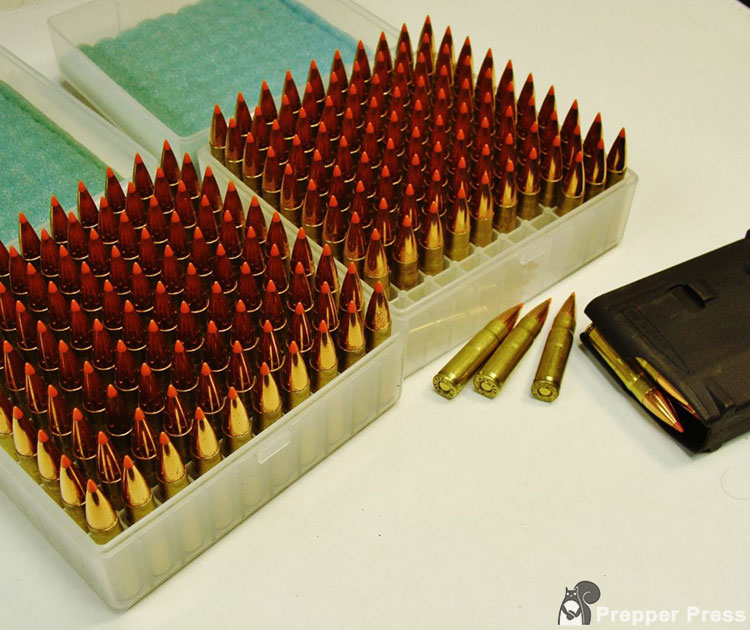
These handloads replicate Hornady’s factory 110 V-MAX load, clocking around 2350 fps with good accuracy.
Final Thoughts
Early on, I viewed my re-formed brass as gold, quickly investing in a Caldwell Brass Catcher. This situation eventually changed for the better, but re-formed .223 brass is still my main source of .300 BLK cases. Most are the basis for factory-equivalent 110 Hornady V-MAX or 110 Barnes Vortex rounds (solid-copper TAC-TX bullets). Although I still shoot some subsonic handloads, most nowadays are factory-loaded 190-grain Hornady SUB-X, which are properly engineered to expand at low velocities.
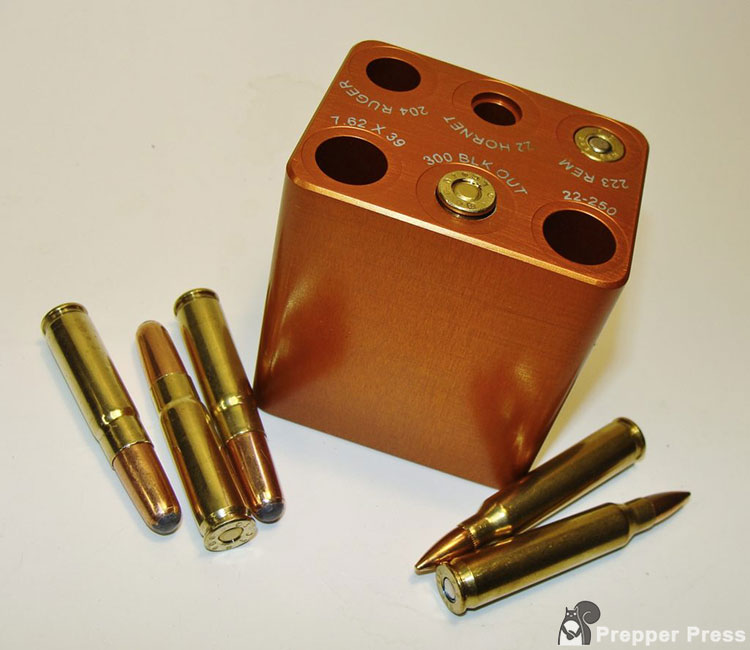
A Few Caveats
For starters, even first-rate .223 cases could present problems when re-formed. I’m a big fan of Hornady products but a trial batch of their excellent .223 cases resulted in excessively thick necks.
At the opposite end of the spectrum, a bag of commercially reformed .300 BLK cases yielded similar problems resulting from mixed headstamps. I soon discovered the value of a chamber gauge. The Lyman Ammo Checker is a nice machined block of aluminum with properly dimensioned “chambers,” and it even incorporates a few additional calibers.
Reloading .300 Blackout ammunition is another topic in itself. Among the various details, overall length is important since it can affect feeding in AR mags. I also check each cartridge with the chamber gauge.
Results have been universally good in a bunch of .300 Blackouts, which is good news in light of the current ammo crunch. Looks like it’s time for a trip back to square one. The same approach may work for you.

3 comments
I’m just getting into 300BO and it has been fun. My first load of ammo was Federal 150 grain flying at approximately 1900 FPS.
First this I do at the range, before anyone arrives, is look in the trash cans and at each shooting station. I’ve been doing this for the last 12 years. I always bring home 223, 357/38 and 9mm.
With the addition of my new AR15 in 300BO, I now have a purpose for all of the 223 brass I’ve collected.
Thanks for the article. Very timely for me and full of good, useful data.
Jerry
JUST learned about 300 BLK….I shoot competitive 308 and 5.56/223…..never considered the 300 until I found out about subsonic loads. For a home defense rifle, it is very appealing considering my neighbors’ homes are not that far from ours. The potential for an errant round entering a neighbor’s home is unthinkable. This is a much slower round than a 223 or a 7.62×51 (308 Winchester) for that matter. Am excited to do some investigation work at the range.
Thanks for a great article.
Glad you found it helpful.